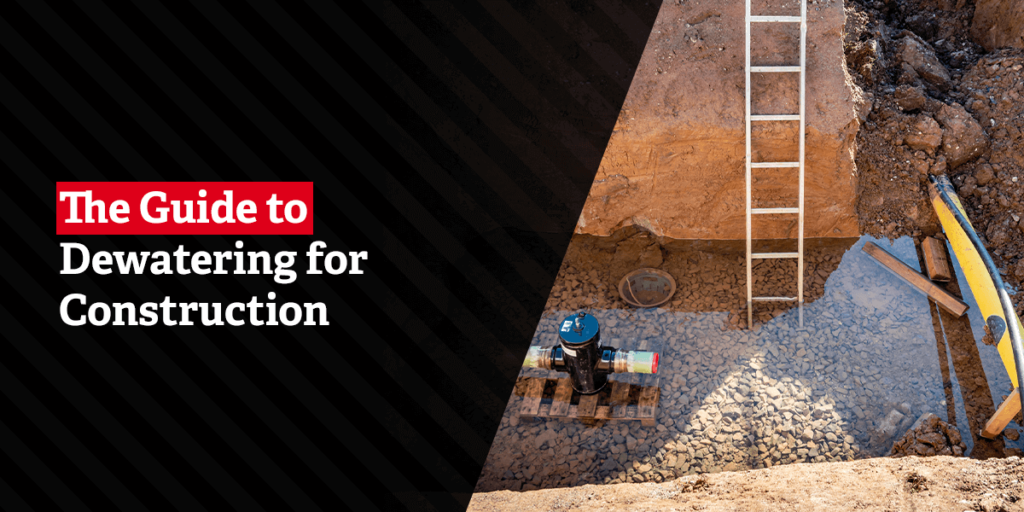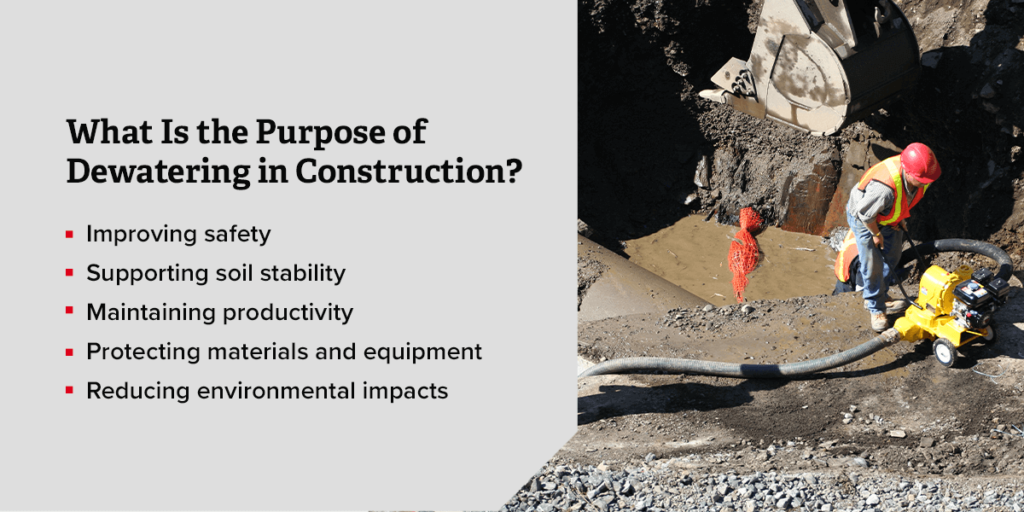

Dewatering is an essential process in the construction industry. Job sites with wet soil can be dangerous and lead to mudslides and unstable structures.
Removing excess water helps keep projects on schedule and maintains job site safety. There are various methods for removing surface water or groundwater, depending on the construction zone’s soil and excavation.
Use this guide to learn more about the dewatering process and why it is so important for construction projects.

Dewatering refers to the process of intentionally removing surface or groundwater from a specific location. This practice is especially vital to construction because workers rely on dry and stable soil. Projects that involve excavation require dewatering to maintain worker safety and soil stability.
The dewatering process includes the following steps:


Dewatering improves work site conditions and serves multiple purposes. The following are the major reasons why this process is so important to the construction industry:
There are a few dewatering methods used in the construction industry, including the following:
The wellpoint method of dewatering utilizes a series of small wells situated evenly along an excavated area. Each wellpoint connects to the main pipe, where a high-efficiency pump carries the water away from the ground and to a specified discharge area.
Another technique for removing water is eductor well dewatering. This method involves a series of small-diameter wells that have a nozzle powered by a pumping station that the water flows through. Eductor well dewatering is a common choice for job sites with deep excavation because this system does not have suction lift limits.
Sump pump dewatering is the most common method for removing water from a job site. It involves sump pit excavation where workers create temporary pits to collect groundwater before routing it to a proper discharge area. This method is best suited for sites with a high sand or gravel content and shallow excavation. It is the simplest and most cost-effective dewatering solution.
Deep well dewatering is slightly more complicated. It involves the removal of water from beneath an excavation and therefore requires a higher rate of pumping in to move the water to discharge sites efficiently. Each deep well has a submersible pump that propels water rather than pulling it like other vacuum-powered dewatering methods.
There are a few common construction dewatering tools that are responsible for filtering and moving water to discharge areas, including:

Anytime you pump water away from your work site, you’ll want to ensure the discharged water is not causing soil erosion. Pay attention to the following factors:
You should carefully monitor the dewatering process to make job sites as safe as possible for construction workers and the environment alike.